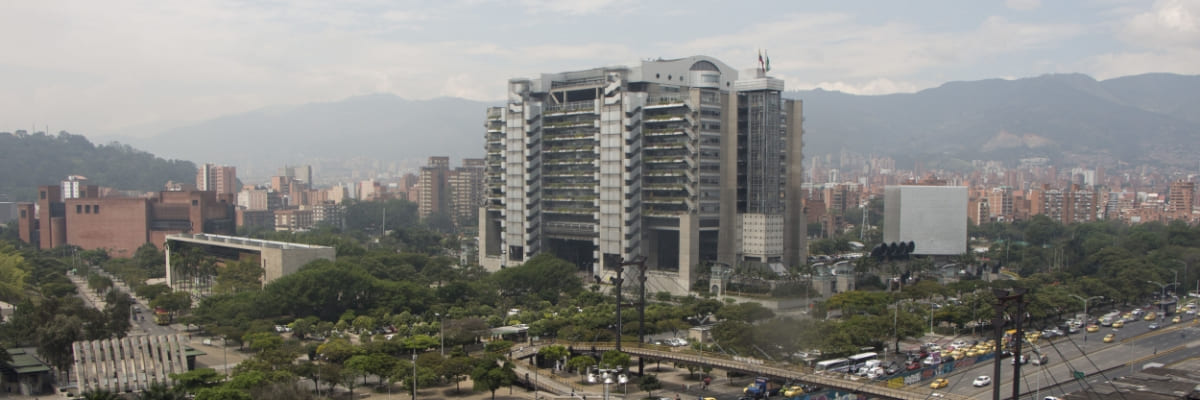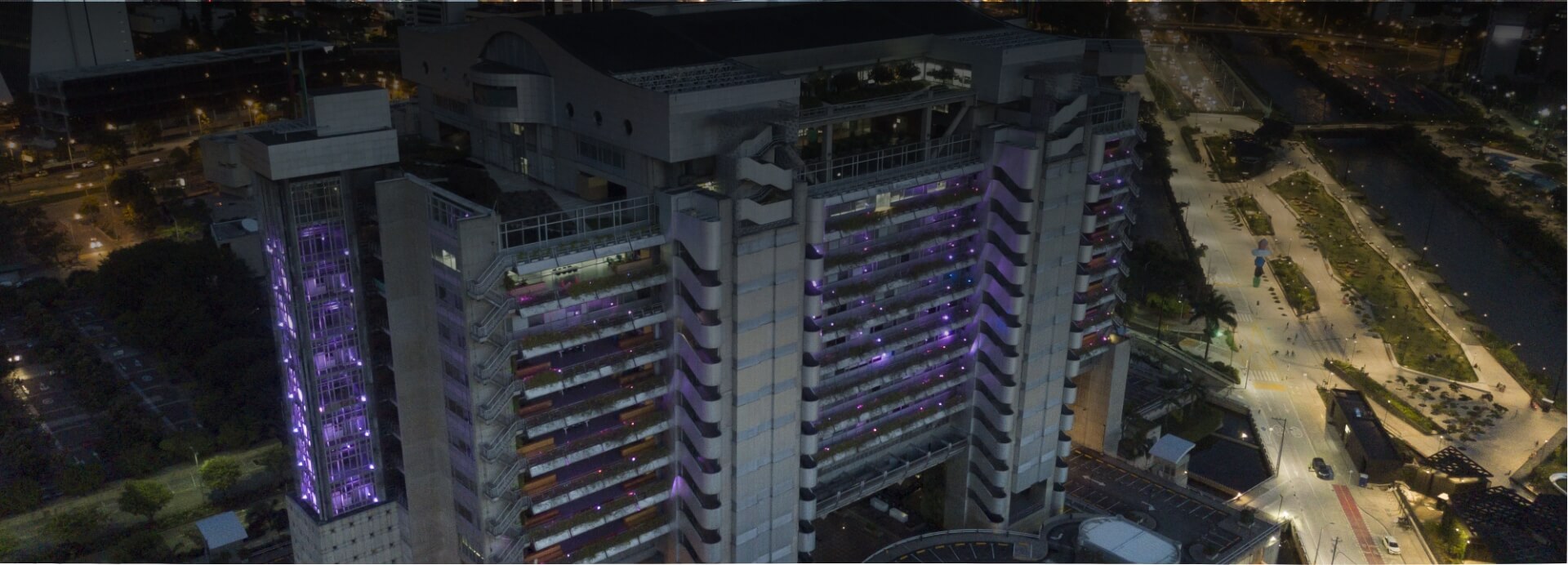National Disaster Risk Management System modified the alert status and EPM activated the return plan for evacuated families
- Fecha de publicación
- 2019-07-26 00:00
- Contenido
-

- This decision will make it possible for 691 families to go back to their homes in the village of Puerto Valdivia, Valdivia municipality
- EPM will accompany the community in their return process, ensuring that their homes — and public service infrastructure — are in optimal condition
- This step will allow the company to initiate the repair work on physical infrastructure affected in the area, including bridges and schools
- EPM created the Territory Management Directorate because people, their quality of life and development are important to the organization
Technical advances achieved in the Ituango hydroelectric project and the authorities placed in communities to react to potential contingencies by EPM allowed the National Disaster Risk Management System (SNGRD) to modify the state of alert for the evacuation of populations located downstream from the future power plant on Friday, July 26.
This determination, expressed in circular No. 032 of July 26, 2019, set the alert state as follows:
Red Alert: Maintained at the dam site and has been modified for the town of Puerto Valdivia and some areas of Tarazá. The decision has been made that no city is in red alert, which implies a permanent preventive evacuation mode.
Orange Alert: Established for urban and rural areas, towns, sidewalks and/or populated areas located on the banks of the Cauca River from Puerto Valdivia to the urban headwaters in the municipalities of Cáceres and Tarazá. This means that its inhabitants must be prepared and ready for immediate evacuation, as directed by the authorities.
Yellow Alert: Continues for the municipalities of Caucasia and Nechí (Antioquia), San Jacinto del Cauca and Achí (Bolivar), Ayapel (Cordoba), and Guaranda, San Marcos, San Benito Abad, Majagual, Caimito and the municipality of Sucre (Sucre). This means that residents must be ready and prepared to evacuate.
Technical progress
The decision to modify the alert status took place this Friday at the Unified Command Station (PMU) at the EPM Tacuí Camp in Valle de Toledo, Northern Antioquia. There, the institutions that make up the SNGRD analyzed the information delivered by EPM on the technical advances achieved in the project that, to date, include:
Technical progress
The decision to modify the alert status took place this Friday at the Unified Command Station (PMU) at the EPM Tacuí Camp in Valle de Toledo, Northern Antioquia. There, the institutions that make up the SNGRD analyzed the information delivered by EPM on the technical advances achieved in the project that, to date, include:
Dam: It is finished, at the level of 435 meters above sea level (msnm). Construction meets the highest national and international technical standards
Landfill: It is fully operational and with a flow capacity to evacuate probable maximum flood (22,600 m3/s).
Piping and engine house: There is no water flow through the engine house after closing gates 1 and 2.
Right deviation tunnel: The closing procedure is currently running.
Gallery gate (tunnel) deviation closure assistant: The first gate is ready and operational and the second gate’s point-to-turn.
Intermediate flow: Is being strengthened to increase its flow capacity.
EPM Technical Monitoring Center (CMT): It operates 24/7 with expert staff that monitor the main fronts of civil works and solid rock. Special devices review nearly 650 variables, including: geotechnics, seismic, hydraulic, climatological and water.
Preparing to respond
To modify the alert status, EPM’s work with allied institutions to prepare communities for a contingency within the project was important.
The early alert system was installed with the implementation of the Contingency Plan in 2016, prior to the current situation. Today it has 61 systems in the municipalities of Ituango (7), Valdivia (20), Tarazá (9), Cáceres (10), Caucasia (8) and Nechí (7), which are made up of antennas and automatic
568 workshops were also held. The Red Cross trained 28,068 people and held 162 evacuation drills with the participation of 8,700 citizens. Basic emergency kits were provided to the Municipal Disaster Risk Management Boards, community leaders, aid bodies and some educational centers; evacuation routes and meeting points, call chains, and emergency action protocols were provided and reported on site about the situation of the work to the Cordoba, Sucre and Bolivar Risk Management Boards. sirens that are connected to the Organization’s Technical Monitoring Center
Go home
EPM CEO Jorge Londoño De la Cuesta said “changing red to orange alert status allows us to undertake reconstruction of community infrastructure that was affected. The work will start on Saturday, July 27, and we will begin the gradual return to some homes that were evacuated, ensuring that those returning to their home find them in optimal conditions.”
Works to develop in the town of Puerto Valdivia include: the diagnosis and commissioning of energy utilities, public lighting and water supply, cleaning of public and common areas with the involvement of Emvarias, subsidiary of the EPM Group; the adaptation of Pescado, Barca Cautiva, Palomas, Puerto Nery, Cachirimé and Astilleros schools; the intervention of Palestina, Turcó and Simon Bolivar bridges; construction on the El Nevado synthetic court and the Cachirimé stadium (used as a temporary hostels) and construction of the health center in a new place. This is in addition to the work on the El 12 town bridge in the municipality of Tarazá.
The return plan includes, but is not limited to, diagnostic actions of physical infrastructure conditions, socializing with families, restoring homes, shops and activating public services; strengthening risk management, psycho-social support and relocation to homes.
Londoño De la Cuesta specifically thanked “the community, which has been patient with the difficulties that led to the contingency in the Ituango hydroelectric project and understood that EPM was doing its best to resolve the issue as soon as possible.”
He also expressed his gratitude and recognition to “all institutions, especially the National Unit for Disaster Risk Management (Unidad Nacional para la Gestión del Riesgo de Desastres, UNGRD), which during these 15 months have accompanied us in best serving the population with the great achievement that there was no loss of human life.”
The community has worked hard and the EPM environment has been supported by UNGRD, the Ministry of Mines and Energy, Ministry of Sustainable Environment and Development, Ministry of Agriculture and Rural Development, Ministry of Health and Social Protection, National Environmental Licensing Authority (Autoridad Nacional de Licencias Ambientales , ANLA), Colombian Air Force, Colombian Army, National Police, IDEAM (Instituto de Hidrología, Meteorología y Estudios Ambientales, [Institute of Hydrology, Meteorology and Environmental Studies]), ICBF (Instituto Colombiano de Bienestar Familiar, [Colombian Institute for Family Welfare]), INVIAS (Instituto Nacional de Vías, [National Institute of Roads]), National Learning Service (Servicio Nacional de Aprendizaje, SENA), Colombian Geological Service, Social Prosperity Directorate, National Department of Planning, Land Renovation Agency, Solidarity Organizations Special Administrative Unit, Humboldt Institute, National Authority of Agriculture and Fishing, Government of Antioquia, Metropolitan Area of Valle Aburrá, Corantioquia, Colombian Civil Defense, Colombian Red Cross, National Directorate of Colombian Firefighters, Garza Rescue Group, municipalities of Valdivia, Nechí, Cáceres, Caucasia, Tarazá, Ituango and City of Medellín.


